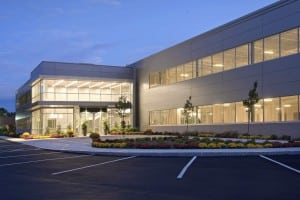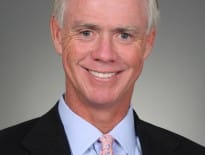Foreign investors acquired $4.3 billion worth of commercial properties in Greater Boston in the last year, pushing prices to record levels on Boston and Cambridge trophy buildings.
Boston is the second-biggest U.S. market for overseas investors, trailing only Manhattan’s $11.3 billion figure, according to industry research.
“The common theme is: they’re looking for safety in yield,” said Chris Phaneuf, a managing director at HFF in Boston. “For capital that’s sitting in China, hard assets in the U.S. look pretty damn good.”
Phaneuf and other executives discussed the latest economic trends and the investment climate at a Commercial Brokers’ Association forum Wednesday.
The flood of capital from Canada, Europe and Asia shows no sign of letting up, as institutional investors seek stability and superior yields to bonds in the lingering low-interest rate environment. Another $125 billion is available for investment, and foreign buyers continue to focus on a handful of coastal U.S. markets including Boston. Foreign capital represents 20 percent of all commercial real estate transaction volume in the U.S. this year, according to Real Capital Analytics.
Local investors will be hard-pressed to outbid foreign investors looking for safe havens in U.S. real estate, Phaneuf predicted.
“In some cases, the investor is not even looking for a return, just looking for a place to put it and remain safe,” he said.
With fewer Boston trophy properties in play this year, investors may bid up demand in top-tier suburban markets.
High-end class A office properties in Boston and Cambridge are now selling for nearly twice the pre-recession peak. Toronto-based pension fund manager Oxford Properties Group has led the charge with such recent acquisitions as the 1.3-million-square-foot 500 Boylston/222 Berkeley St. complex in Back Bay, which sold this summer for $1,000 per square foot. That represents a high-water mark for office space in Boston.
Demand is highest for newer properties in the core Boston and Cambridge markets, said Paul Leonard, a real estate economist for Costar. Vacancy rates on Boston offices built since 2008 are under 10 percent. And buildings in the core Boston and Cambridge markets are trading for nearly twice their pre-recession levels.
Properties in suburban core markets such as Route 128, Route 9 and Watertown are selling for just 21 percent above the 2006-2007 peak. Properties in all other Boston suburban markets are selling for 23 percent below the peak.
“Today’s best opportunities are in the suburbs,” Leonard said.
CMBS lending could become a major factor driving suburban deals, said Greg LaBine, a managing director at HFF. CMBS activity has hit an annual rate of $94 billion, the highest in over a decade.
“CMBS is proving to be a strong capital provider for Greater Boston, especially as suburban real estate transactions move farther from the urban core and investors seek yield by migrating to secondary markets,” LaBine said. “As buyers begin to move up the risk spectrum, CMBS will play a much more active role in the Boston landscape, affording buyers competitive pricing on deals that are not hit straight down the fairway.”




 |
| 

